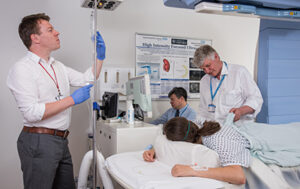In today’s fast-paced restaurant industry, technology plays a crucial role in streamlining operations and enhancing employee satisfaction. Restaurant software has evolved significantly, bringing forth a range of tools designed to optimize workflows, reduce errors, and improve communication among staff. This evolution is reshaping the dining experience and significantly impacting employee efficiency and satisfaction.
This article explores the various ways in which restaurant software enhances employee performance, increases job satisfaction, and ultimately contributes to the overall success of a restaurant.
1. Introduction to Restaurant Software
Restaurant software encompasses a wide array of digital tools that help manage various aspects of a restaurant’s operations, including point-of-sale (POS) systems, inventory management, scheduling, payroll, customer relationship management (CRM), and kitchen display systems. These solutions automate many time-consuming tasks, allowing staff to focus on providing exceptional service to customers.
In the past, restaurants relied heavily on manual processes, which often led to errors, miscommunication, and inefficiencies. However, with the advent of advanced restaurant software, many of these challenges have been addressed, resulting in smoother operations and more satisfied employees.
2. Enhancing Employee Efficiency with Restaurant Software
One of the primary benefits of restaurant software is its ability to enhance employee efficiency. Here’s how:
a. Streamlining Order Taking and Processing
Modern POS systems enable waitstaff to take orders quickly and accurately, sending them directly to the kitchen. This eliminates the need for handwritten tickets and reduces the likelihood of errors, such as incorrect orders or missed modifications. As a result, kitchen staff can start preparing meals immediately, reducing wait times and improving table turnover rates.
b. Automating Inventory Management
Inventory management software helps restaurants keep track of stock levels in real-time. This automation reduces the time employees spend on manual inventory counts and minimizes food waste by alerting staff when items are running low. Additionally, the software can automatically generate purchase orders based on preset thresholds, ensuring that the kitchen is always well-stocked without over-ordering.
c. Simplifying Employee Scheduling and Time Tracking
Scheduling software simplifies the process of creating and managing employee shifts. Managers can quickly create schedules that consider staff availability, skill sets, and labor laws. Employees can easily view their schedules, request time off, or swap shifts through mobile apps, reducing scheduling conflicts and last-minute call-offs. Time-tracking features also streamline payroll processing, reducing the time and effort needed for administrative tasks.
d. Improving Communication and Collaboration
Effective communication is essential in a fast-paced restaurant environment. Restaurant software often includes team communication tools, such as messaging apps or shared digital boards, that allow staff to communicate instantly about changes in orders, special requests, or any issues that arise. This reduces the chances of miscommunication and ensures that everyone is on the same page, leading to a more harmonious and efficient workplace.
e. Providing Real-Time Data and Analytics
Restaurant software provides managers with real-time data and analytics on sales, labor costs, and employee performance. This information allows managers to make informed decisions, such as adjusting staffing levels during peak hours or identifying training needs for underperforming employees. By using data to drive decisions, managers can optimize operations, leading to a more efficient and productive workforce.
3. Boosting Employee Satisfaction Through Technology
While efficiency gains are crucial, restaurant software also plays a vital role in boosting employee satisfaction. When employees are happy, they are more likely to stay with the restaurant longer, provide better service, and contribute positively to the team dynamic.
a. Reducing Workplace Stress
Restaurant work can be stressful, especially during busy shifts. Software solutions help reduce stress by automating repetitive tasks, such as order entry, inventory checks, and scheduling. This allows employees to focus on higher-value tasks, such as interacting with customers and providing excellent service. By reducing the cognitive load on staff, restaurant software helps create a more enjoyable and less stressful work environment.
b. Offering Training and Skill Development Opportunities
Some restaurant software includes built-in training modules or access to online learning platforms. These tools help employees learn new skills, stay updated on menu changes, or familiarize themselves with new processes. Continuous learning opportunities can increase job satisfaction by allowing employees to grow professionally, which is especially important in an industry with traditionally high turnover rates.
c. Empowering Employees with Self-Service Options
Employee self-service features, such as viewing schedules, managing availability, or clocking in and out through mobile devices, empower staff to take control of their work life. This autonomy increases job satisfaction by reducing the need for constant managerial intervention and allowing employees to manage their own time more effectively.
d. Recognizing and Rewarding Employee Performance
Restaurant software can track individual and team performance, making it easier for managers to recognize and reward high achievers. For example, POS systems can identify top sales performers or highlight employees who consistently receive positive customer feedback. Recognizing achievements not only boosts morale but also encourages employees to continue performing at their best.
e. Facilitating a Positive Work-Life Balance
Flexible scheduling options enabled by restaurant software allow employees to better balance their work and personal lives. The ability to swap shifts, request time off, or adjust availability through software platforms means that staff can more easily accommodate their personal needs without causing disruptions to the restaurant’s operations. A healthier work-life balance leads to happier, more motivated employees who are less likely to experience burnout.
4. Case Studies: Real-World Examples of Impact
To illustrate the impact of restaurant software on employee efficiency and satisfaction, let’s look at a few real-world examples:
a. Restaurant A: Improved Efficiency with Digital Order Management
Restaurant A implemented a modern POS system that integrated with their kitchen display system. This change reduced order errors by 50% and cut the time from order placement to delivery by 30%. Staff reported feeling less overwhelmed during peak hours because they could focus on service rather than correcting mistakes.
b. Restaurant B: Increased Employee Satisfaction with Self-Scheduling
Restaurant B adopted scheduling software that allowed employees to set their availability and swap shifts independently. This change reduced scheduling conflicts and improved employee satisfaction scores by 20%. Managers also noticed a decline in last-minute call-offs, as employees felt more in control of their schedules.
c. Restaurant C: Enhanced Training and Performance Recognition
Restaurant C used software that included performance tracking and training modules. New hires were able to complete training at their own pace, which led to a smoother onboarding process. The software also allowed managers to track sales performance and reward top employees with incentives. Staff turnover decreased by 15% within the first year of implementation.
5. Challenges and Considerations
While the benefits of restaurant software are substantial, there are challenges that need to be addressed:
a. Cost of Implementation
The initial investment in restaurant software can be significant, particularly for smaller establishments. However, the long-term benefits often outweigh the upfront costs, as efficiency gains and improved employee satisfaction can lead to higher sales and lower turnover rates.
b. Learning Curve and Adaptation
Employees may face a learning curve when new software is introduced. It’s crucial for restaurants to provide adequate training and support to help staff adapt to new systems. A gradual implementation strategy can also help ease the transition.
c. Data Security and Privacy Concerns
With the increased use of digital tools, data security becomes a concern. Restaurants must ensure that sensitive employee and customer data is protected by choosing software providers with robust security measures.
6. Conclusion
The impact of restaurant software on employee efficiency and satisfaction cannot be overstated. By automating repetitive tasks, improving communication, and providing valuable data insights, these digital tools empower staff to perform their jobs more effectively and enjoyably. When employees are efficient and satisfied, it translates into better customer service, higher sales, and a more successful restaurant.
Investing in the right restaurant software is not just about keeping up with technology trends—it’s about creating a workplace where employees can thrive. As the restaurant industry continues to evolve, those who leverage software to enhance employee experiences will be best positioned to succeed in an increasingly competitive market




